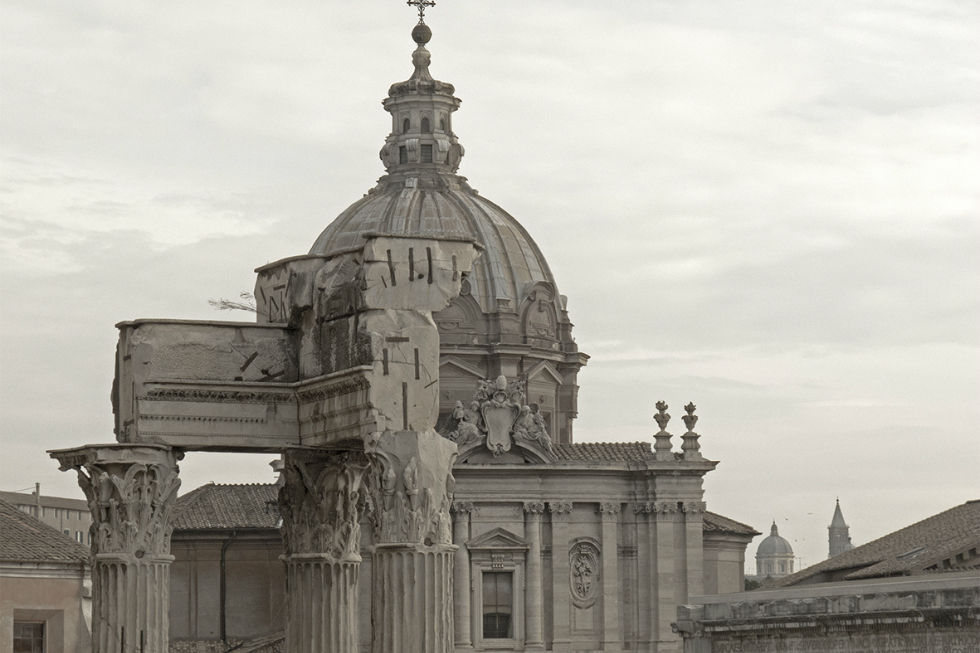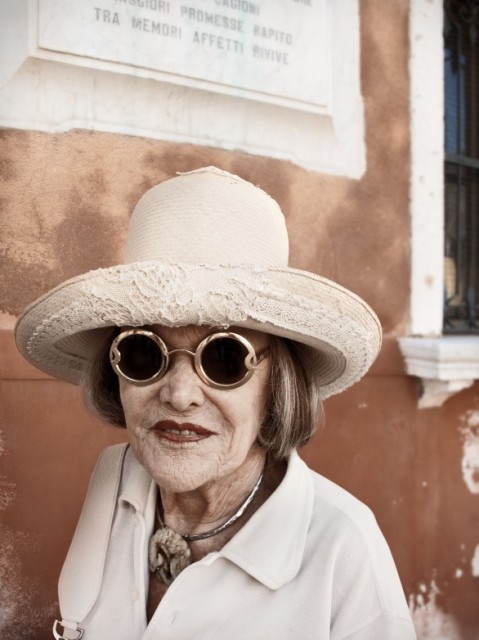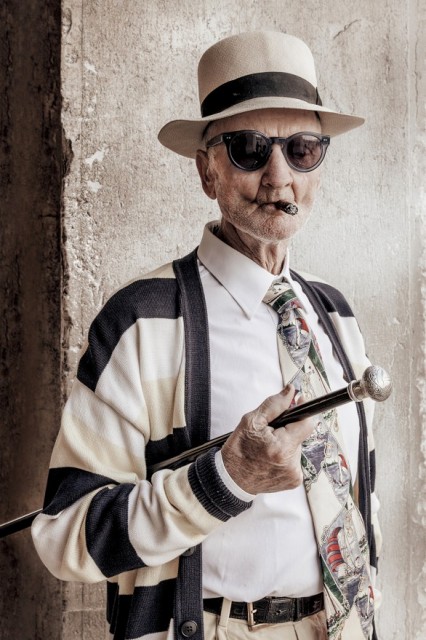“I like things that have a bit of texture and substance”: Robert Walker’s The Classics

Sara Jaspan meets the latest artist to grace the book-lined walls of the The Portico library in Manchester, and finds herself transported to city streets of a more sun-kissed variety…
The Portico library is an unusual place. Though you’re in the very centre of Manchester, with the noise of traffic and people still audible; once you reach the top of the stairs, sign the visitors’ book, and enter the reading room, you feel quite removed from the rest of the city. There’s a brilliant sense of calm. Time seems to decompress.
Pots of loose leaf tea are served by volunteers, among books sorted into categorise like: VOYAGES AND TRAVELS or POLITE LITERATURE. The furniture is oak. The architecture is neo-classical. There are displays of hand-drawn maps, and a faint smell of dust. The past is almost worshipped.
It makes a perfect setting for Robert Walker’s series of fourteen colour photographs, The Classics, organised by Comme Ca Art. All images were taken around 2012, of either Rome or Venice (two cities where the present seems almost overcrowded by the past), by a photographer who describes himself as out of step with the world around him.
Not that the collection attempts to return to a specifically older Italy, or one that’s incompatible with today. The images are of many of its most iconic, enduring views: long, sweeping shots of the Vatican’s gold-encrusted ceiling, the Forum’s many stone columns, statued balconies and St Mark’s square.
We’re also taken beyond, to other less familiar scenes of a misty lido at dawn; an old GELATERIA – PASTICCERIA van, of the kind still very much in use; and one of those glamorous Italian ladies that pass you in the street, shielded behind heavy, gold-rimmed sunglasses.
The thing about Italy is: much of its present looks old (especially to an outsider’s eye). History exerts itself to an unparalleled extent. Walker’s images, by comparison, look removed from any fixed time.

The series has been taken (reluctantly, due to the growing scarcity of analogue film) using a digital camera, but printed on very heavy German Hahnemühle paper. This soaks-up the ink, giving each of the photographs a certain depth. “It’s almost like watercolour paper, really,” Walker describes.
In conversation he explains: “I don’t think many people realise that the medium that the work is printed on makes such a difference to the way you interpret it. A lot of the fashion now is to go for very high gloss, plasticised prints. This just doesn’t suit my work. It’s too hard and clinical. I like things that have a bit of texture and substance.”
The heaviness softens the image, slowing it down. When you look closely, they’re more like paintings than photographs (apt given it’s Italy). The distorted reflection of the cobbles on the metallic bumper of the ice cream cart could be the result of hours of brushwork, while a wintery gathering of broken ice blocks is made beautiful.
Walker acknowledges this himself, but connects it more to his background working as a professional advertising photographer. Born in Manchester in 1960, he left school at 16, going on to set up his own studio at the age of 20.
Looking back he tells me: “If I was known for anything really, it was my lighting. I was a studio-based photographer, so every day I would go into just a white room with nothing there and have to create everything.
“As a result, my light has always been quite painterly,” he continues. “I’ve never attempted to copy Caravaggio, or anything like that! But most of my pictures tend to have that slightly ‘renaissance’ feel.”

After nearly 30 years in the game, Walker left advertising in 2007, going on to make only personal work, beyond the studio. This has been shown internationally in Florence, Frankfurt, New York and London.
Yet the manipulation of light continues to serve him as a way of creating meaning. Here, for example, in a number of The Classics, through the use of double exposure. An interior of an empty (relatively) unremarkable corner of the Vatican, that might otherwise go unnoticed, is made to straddle two separate time frames simultaneously, giving the scene a vaguely dream-like quality. We stop to linger over its details.
Walker likes empty space. “It allows the viewer to fill in the gaps.”
He also makes portraits, and there are two rather bold ones included in the show. The one of the woman, and the other of a very stylish old gentleman who looks like he stepped straight from a film – a cigar hanging from his mouth, and silver topped cane tucked beneath his arm.
Walker recounts stories of how he caught sight of the old lady on board a vaporetto: “She reminded me of Peggy Guggenheim, who’s obviously synonymous with Venice.” The gentleman, on the other hand, “was just like a strutting peacock, dressed up for everybody to applaud. It felt rude of me not to take his picture. Even though I had to chase him across a square to ask – he was going like the wind.”
Walker later returned to the spot where he photographed his Peggy, hoping to present her with a print, but unfortunately never found her.
The story speaks well of the romanticised, enchanting associations that Italy seems to conjure, and which Walker’s work is somewhat guilty of. Though you could certainly capture an uglier, less perfect side of either city; why, when there’re so many aesthetically pleasing opportunities?
Yet Walker’s photographs aren’t all like this. At home in Manchester, he goes in search of a rather different kind of civic identity. Seeking out what he terms “it’s seedier side.”
Another exhibition of his work is due to open later this year (12 December 2015) at the Touchstone Gallery in Rochdale, entitled The Fifth Continent. In contrast to the sun-kissed delights of Venice or Rome, here Walker turns his attention to Dugness in Kent: home to no less than two nuclear power stations, and classified by the Met Office as Britain’s only desert. It will certainly be interesting to see how he explores this rather different new territory.
Sara Jaspan
This article has been commissioned for the collaborative #BeACritic project — an annual programme of mentoring and commissioned critical articles for North-West-based writers, initiated and supported by The Double Negative, Liverpool John Moores University and Arts Council England. See more here
See Robert Walker’s The Classics at The Portico library, Manchester, until Monday 29 June 2015 — free entry
Exhibition opening hours: Monday 9.30-16.30; Thursday 9.30-17.30; Friday 9.30-16.30; Saturday 11.00-15.00; (Sunday Closed)





